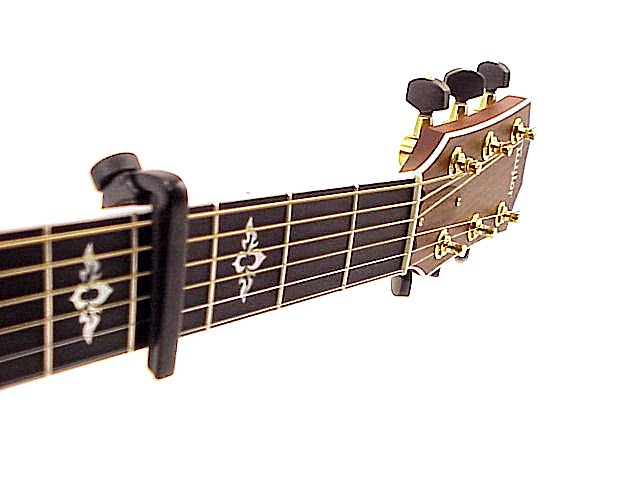
This blog is mostly for those people who want to learn guitar. The materials that I used are mostly based on my own experience, books that I've read, and from the internet. So previously I've encounter some people who wanted to learn but could not find time to learn from a teacher so I hope this would be useful for you guys :) Happy practicing!
Saturday, March 24, 2012
Capo

Sunday, March 18, 2012
6/8 Strumming
Thursday, March 15, 2012
Strumming Pattern
Tuesday, March 13, 2012
3 Guitar Tips You Cannot Miss
A guitar is a beautiful thing, but, it can't play music alone. It needs you. And while a guitar is only as good as its master, the master can always improve. And, I hope to teach you a few tips here today about improving yourself fast and easy (and not to mention, fun!).
The first thing you need to do is find a reason to keep playing. Is it for fun? Is it to become more technically adept? Learn a million songs and play at parties? Pick up girls (or guys)? What? So, this is your first tip: exploit your reason to play. The goal here is to get you spending more time doing something you love to do. If you just want to have fun, then me suggesting scales and rhythm exercises is gonna turn you off. So have fun! Learn cool tunes, grab a beer and invite a buddy over to jam.
Speaking of buddies, perhaps you should consider how many friends you have that are musicians. Most people know a few right off the top of their head, but you should know a bunch more than that. In fact, you should have a massive list of musician friends ready to hang out and play with at a moment's notice. Why? Because you should always try to improve yourself by playing with musicians who are different or better than you. Everyone knows that art isn't created in a bubble. It takes inspiration, some background and, sometimes, a gentle push by a more talented musician. The last suggestion I'll give is a little bizarre and non-obvious, but let me try to get through it in a way that isn't crazy. So, you know how to speak, write and read. You can spontaneously create new sentences, paragraphs and even whole novels on a whim, most of them never heard before. And, you probably don't think much of it. This is everyday stuff. Well, I implore you to use the same sort of ability you already possess to restructure language and use it to restructure music. In short, learn to abstract every concept, chord, lick or note away from the context you learned if for. This will teach you that you can remix and reuse everything you've ever learned in new and interesting ways. The possibilities are endless, and if that doesn't excite you, then... what will? |
Saturday, March 10, 2012
Strumming

- evenness of tone
- avoiding bass strings that are not meant to be hit
- the ability to strum up and down with equal facility
- controlling the volume
- keeping steady time

- Hold down any chord. Maybe you can start from holding down an E Major chord. Or C Major. Anything that is comfortable for you.
- Tap your foot, count to yourself, or get a metronome (if you have one, use it. If you don't you can check out the right side of this blog, or any other online metronome).
- Set the metronome going at a medium tempo (around 80 to 90 bpm).

Friday, March 9, 2012
Chords
| Major | Minor | ||||||
| KEY | 1 | 4 | 5 | 2 | 3 | 6 | 7 |
| C | C | F | G | Dm | Em | Am | Bm |
| D | D | G | A | Em | F#m | Bm | C#m |
| E | E | A | B | F#m | G#m | C#m | D#m |
| F | F | Bb | C | Gm | Am | Dm | Em |
| G | G | C | D | Am | Bm | Em | F#m |
| A | A | D | E | Bm | C#m | F#m | G#m |
| B | B | E | F# | C#m | D#m | G#m | Bbm |
| C | Am | F | G |
| D | Bm | G | A |
| E | C#m | A | B |
| F | Dm | Bb | C |
| G | Em | C | D |
| A | F#m | D | E |
| B | G#m | E | F# |
About your guitar



